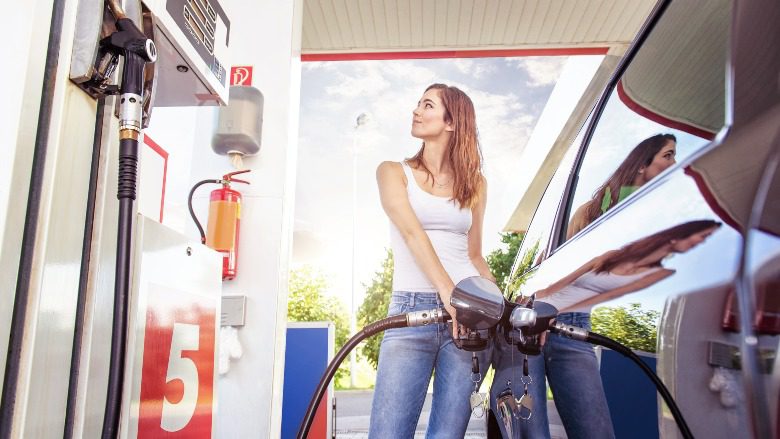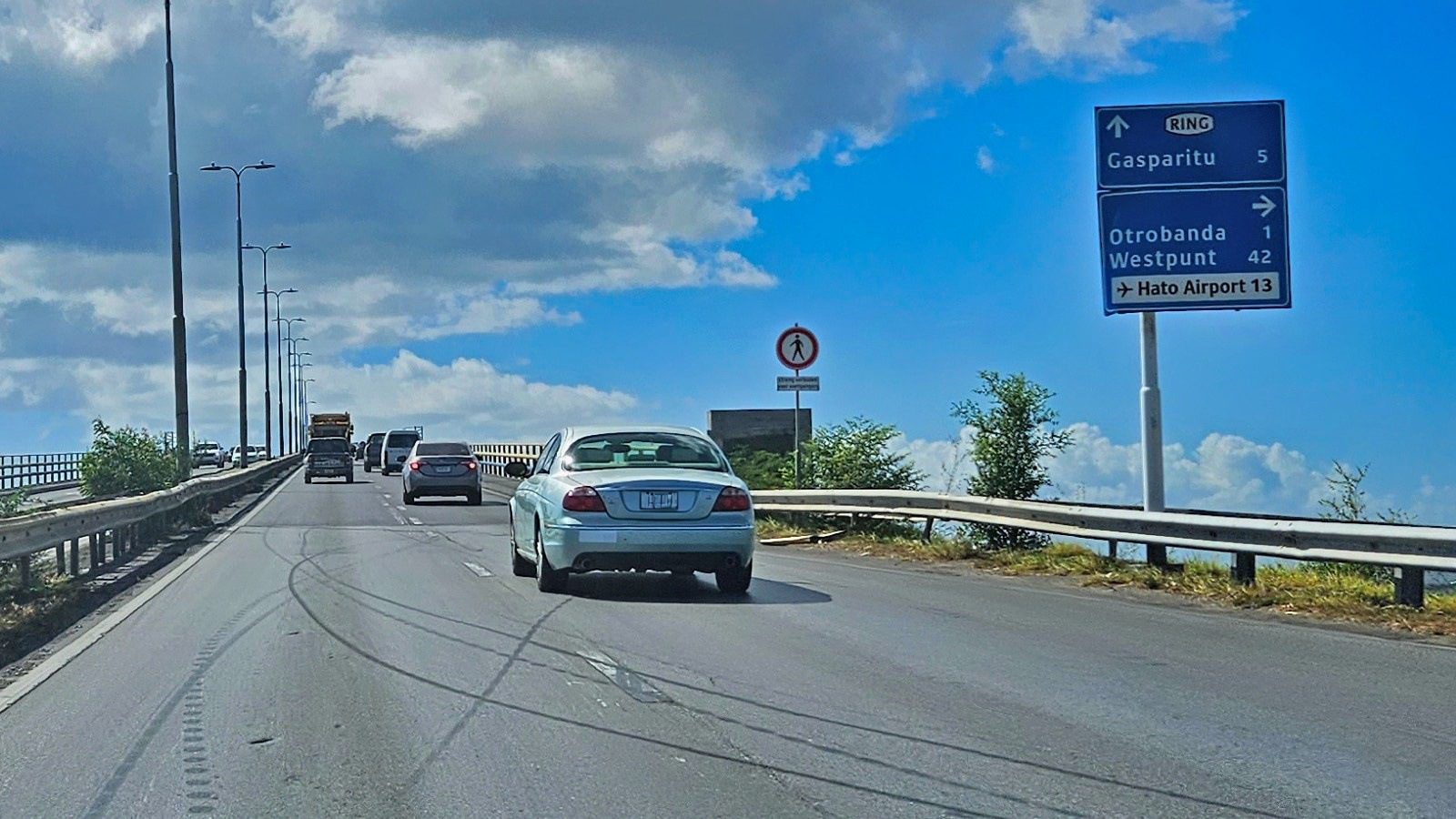As a tourist in Curacao, what is it like to drive a car in traffic? Are Curacao traffic rules different from what you are used to? Can you drive around relaxed or do you have to constantly pay close attention to the traffic that is rushing past you from all sides?
Curacao, Car Island
The people of Curacao really do everything by car. Even if you have to go 300 yards, so to speak. be further away, you take the car. The reason is simple: It is too hot to walk and too dangerous for other forms of (vacation) transportation such as a bicycle or scooter.
Curacao traffic
It is quite easy to go along with the daily traffic in Curacao. Anyway, it is usually quiet on the road and speeding is rare. Curacao therefore has no highways; only the ring road in Willemstad (Schottegat Road) is 2-lane, almost all other roads have one lane per direction of travel. It’s usually all done at ease. Traffic rules are not always followed, but that rarely creates dangerous situations. As long as you get into this style of driving! If you continue to drive hastily as you might be doing back home, things can quickly go wrong.
Also check out this NOS News Summer column by Dick Drayer for a playful (but realistic) view of Curacao traffic.
Curacao rental cars
You will quickly recognize the average rental car on Curacao: many tourists drive a small car like a Hyundai i10 or Kia Picanto. Of course, there are certainly larger models available as rental cars on Curacao, but for average transportation to the beach, restaurants and excursions, a small car will do just fine. Easy to park and on a relatively small island like Curacao you won’t be driving huge distances (As an indication, from the city all the way to Westpunt you will do in less than an hour). The quality of the rental cars is usually fine. But be sure to rent from a reputable car rental. Unfortunately, there are some private individuals/professionals who have one or two cars for hire that they are not licensed for, e.g., or do not have proper insurance.
Automatic
Most cars in Curacao have an automatic transmission, including rental cars in Curacao. In case you’ve never driven an automatic before: it takes some getting used to at first and you’ll undoubtedly step on the clutch that isn’t there a few times, but soon you’ll get used to it and start to appreciate it.
Fueling on Curacao – pay in advance!
Fueling in Curacao is pretty easy, but for some it can be an one important difference: You have to pay in advance before gasoline comes out of the pump. What is nice, however, is that gasoline on Curacao is a lot cheaper than in Europe: converted you pay only about € 1.05 per liter, US$ 4.31 per gallon (price level February 2024).
1. Park your car at an available pump
2. Walk to the little building and indicate how much you want to fill up for at which pump number. If you don’t know in advance how much it will/may cost, give plenty of money; you can get change back after refueling. You can also use debit cards at most gas stations, but not everywhere yet.
3. Go fill up; once you reach the amount paid, the pump automatically shuts down.
4. If applicable: don’t forget to pick up your change. Say a few friendly thanks and hello to the lady behind the cash register (‘danki dushi, ayo’) and you’re good to go.


Deviant behavior
As in any country, Curacao does have its own distinctive traffic and conduct rules. So check carefully for deviations in rules and behavior:
Need navigation on Curacao?
A question we frequently get when a tourist arranges a rental car through us is whether it is necessary to arrange a navigation system for Curacao. If you have a map showing the streets of Willemstad, navigation is not really necessary. Sometimes you may have to search for a minute, but that outweighs the cost of renting a navigation system. After a few days of driving around, you will soon recognize the road and will know how to connect the larger roads to get somewhere.
Offline navigation
What is possibly a tip, however, is to install an offline navigation app on your smartphone. Do this at home, because you need to download a lot of data (a.o. the map of Curacao). So to use this app, you don’t need wifi or 4G data. Turn on your GPS and the app knows how to send you from A to B just fine. Personally, I am very happy with MapFactor: GPS Navigation (Android).
Finding an address on Curacao
Regardless of whether you use a navigation system or look at the map, one problem you may face is that it can sometimes be difficult to find a particular address. This may be because some streets have multiple names. You look for street A, but everyone knows that street as road B. Either the street signs have disappeared or are no longer legible due to the sun and salty air. And then when you have found the street, it can sometimes be a challenge to find the right house number. Not all properties have a number at the front door, and for obscure reasons the numbers are sometimes criss-crossed. And there are also plenty of addresses zunder nummer, where the address is indicated by the street name and the suffix “z/n,” e.g.. “Road to Fuik z/n”. One thing that makes a difference: the average Curaçaoan is very helpful, so don’t be afraid to ask for directions!
Road to Westpunt
Special attention for a moment to the Road to Westpunt, the “provincial road” from Willemstad to the west of the island. This is a relatively long and boring road. Be careful here, especially after dark: many locals drive too fast here and overtake a lot, which is not always done safely. Anyway, do not overtake yourself (really dangerous!!!) and if an oncoming car appears on your side of the road, keep in mind that you have to/can swerve, into the shoulder of the road. Unfortunately, every year there are a number of traffic accidents on this road with fatalities.
Traffic accidents on Curacao
Of course, on Curacao you also have accidents in traffic. On average, there are 40 to 60 collisions per day on Curaçao. What is striking about this is the relatively high number of injuries. Every year, about 3,000 people are injured in traffic accidents, an average of about 8 per day. Since 2013, traffic fatalities have averaged 20 annually. The year 2022 was a negative outlier with 26 traffic deaths. For 2023, the counter stood at 13 in mid-November. One of the biggest causes for relatively many injuries and deaths in traffic is that many people in Curacao still drive without using seat belts.
Tourists remarkably often involved
Research shows that far from all tourists are well informed about Curacao traffic regulations. In fact, tourists on Curacao are remarkably often involved in traffic accidents. It will also play into the fact that tourists do not always know their way around and look around more for the right exit than they pay attention to traffic. And on vacation you will be more relaxed behind the wheel anyway, possibly a little too relaxed. Keep this in mind when getting into a car in Curacao and stay alert!
Public transportation on Curacao
Should you not have a driver’s license, you will have to rely on Public Transportation. In Curacao, Public Transportation consists of two types of bus transportation:
Large buses (convoy): These buses run fixed routes, with a regularity of usually once an hour. There is a large bus station at Otrobanda and one at Punda. Get on at the posts “BUSHALTE” along the side of the road and pay cash to the driver. There is a timetable, but it is not kept as punctually as back home. The convoy buses, of course, operate mainly in and around Willemstad, but also to Westpunt. Our advice is not to want to use these bus services too much, as it is too unreliable what time the bus picks you up.
Small buses (bus): You’ll see these 8-passenger vans driving in traffic plenty of times, recognizable by a sign on the front showing the districts between which that van travels, and by the license plate beginning with “BUS….. If you want to come along, you stand by the side of the road until a van passes, and just raise your hand to make it stop. Tell us where you want to go, find a spot and pay cash before, during or after your ride. You pay per ride, not per distance. Try to avoid the busy times (morning and evening rush hour and early afternoon when schools go out), as an 8-passenger van fills up quickly then. These vans often have a sign placed behind the windshield indicating the neighborhoods the van passes through. The exact route is not known in advance; the drivers are always helpful to take a detour down a street to drop someone off neatly at the door.
Use your wits: Just take a cab at night and don’t wait by the side of the road in the dark!
Let yourself be driven!
If you’re in Curacao for your vacation, you’ll probably also want a night out for dinner with a wine or beer to go with it. You can agree among yourselves who will be the BOB for the evening or arrange for a cab, but know that some Curacao restaurants offer a free shuttle service to and from many tourist accommodations. So check beforehand if the restaurant can pick you up and bring you back home for free, then anyone who wants can have the alcohol and you save the cost of a cab.
Conclusion: go for a ride!
All in all, Curacao traffic is fine as long as you go along with the laid-back atmosphere. You are on vacation, so take it easy and “go with the flow.” A rental car and the gasoline does not cost much, the traffic is manageable: happy vacations!

